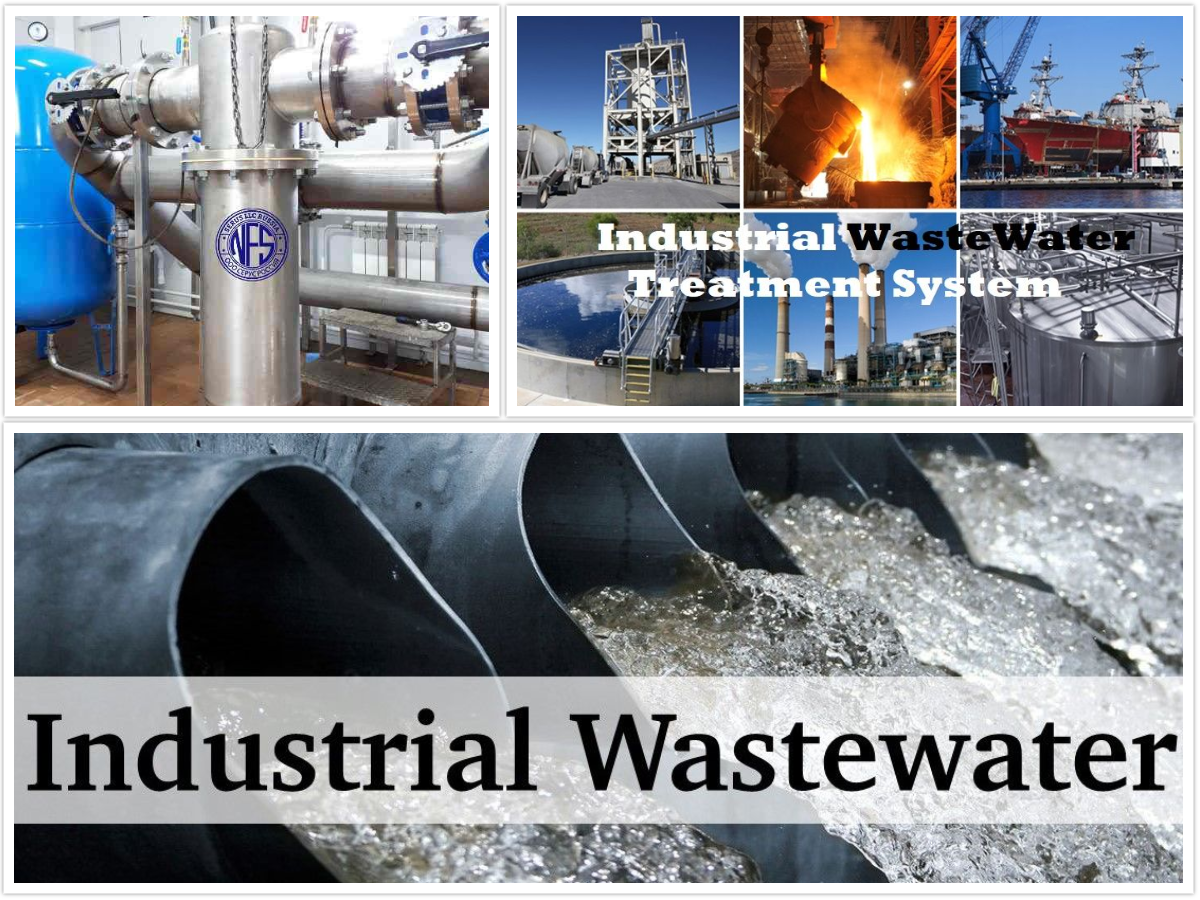Industrial Waste Water Treatment-- Cutting-Edge Technologies for Water Filtration
Industrial Waste Water Treatment-- Cutting-Edge Technologies for Water Filtration
Blog Article
Developments and Advancements in Hazardous Waste Water Treatment Technologies
The landscape of industrial wastewater treatment is undergoing a transformative shift, driven by developments that improve both effectiveness and sustainability. As regulative requirements develop, the combination of AI and device knowing into wastewater management systems promises to streamline operations and ensure conformity.
Introduction of Waste Water Therapy Technologies
Wastewater treatment technologies encompass a series of approaches developed to eliminate pollutants from industrial effluents prior to their launch into the environment. These technologies are critical for keeping environmental balance and ensuring conformity with ecological policies. The key groups of wastewater treatment consist of physical, chemical, and organic methods, each offering unique purposes based upon the nature of the pollutants existing.

Biological treatment techniques use microorganisms to deteriorate natural issue, making them specifically reliable for organic-rich effluents. Techniques like activated sludge and biofilm reactors harness the natural deterioration capacities of microorganisms, bring about significant reductions in biochemical oxygen demand (BOD)
Advanced Filtration Methods
Advanced filtering methods represent an essential advancement in the world of commercial wastewater therapy, boosting the performance of impurity elimination procedures. Industrial Waste Water Treatment. These approaches incorporate a variety of modern technologies, consisting of microfiltration, ultrafiltration, nanofiltration, and turn around osmosis, which give consecutive obstacles for different bit sizes and chemical structures
Microfiltration and ultrafiltration make use of membrane layer systems to get rid of put on hold solids, germs, and larger organic particles, boosting the high quality of effluent prior to further treatment. Nanofiltration links the space between ultrafiltration and reverse osmosis, effectively getting rid of organic substances and divalent ions, hence minimizing the tons on downstream processes.
Reverse osmosis supplies the highest possible level of purification by permitting just water and small molecules to go through its semi-permeable membranes, making it perfect for reclaiming high-grade water from commercial effluents. Current advancements in membrane layer innovation, including the growth of more durable and fouling-resistant materials, have actually substantially improved functional effectiveness and reduced expenses.
Incorporating these innovative filtration strategies not only boosts the overall therapy process however also adds to sustainability efforts by allowing water reuse and source healing in commercial settings. (Industrial Waste Water Treatment)
Organic Treatment Advancements

In addition, the advancement why not check here of engineered organic systems, such as membrane bioreactors (MBRs), incorporates biological therapy with sophisticated membrane filtering. This integration enables higher effluent top quality and minimized footprint, making it ideal for space-constrained industrial centers. Developments in genetically crafted bacteria have actually likewise arised, enhancing the biodegradation of details pollutants, such as drugs and heavy steels, that are traditionally testing to remove.
Furthermore, the implementation of bioaugmentation methods, where advantageous germs are introduced to improve the existing organic treatment processes, has actually shown appealing lead to improving treatment efficiency. These innovations collectively indicate a trend towards even more effective and lasting biological treatment methods that can adjust to the developing intricacies of commercial wastewater streams. As sectors continue to prioritize ecological conformity, these organic innovations will play an important duty in wastewater management.

Resource Recovery Techniques
In industrial setups, the integration of source healing methods has actually become significantly important for boosting sustainability and lessening waste. These methods concentrate on extracting useful materials and power from wastewater streams, thereby changing potential contaminants right into recyclable sources.
One prominent technique is nutrient healing, where nitrogen and phosphorus, often existing over in wastewater, are captured and exchanged fertilizers. This not just reduces environmental influences but likewise gives a circular economic climate remedy for agricultural applications. Furthermore, modern technologies such as anaerobic digestion permit the conversion of natural waste right into biogas, a renewable energy resource that can counter nonrenewable fuel source use in commercial procedures.
Furthermore, advanced filtering and membrane layer modern technologies facilitate the healing of commercial byproducts such as steels and salts. These recovered materials can be reintegrated into production processes, minimizing the demand for virgin sources.
Future Patterns in Drainage Monitoring
As sectors increasingly prioritize sustainability, the future of wastewater management is set to go through considerable improvements. Technical improvements, such as fabricated knowledge and artificial intelligence, will make it possible for more efficient monitoring and management of wastewater systems. These modern technologies can forecast upkeep demands, maximize therapy processes, and enhance decision-making, ultimately reducing operational prices and ecological influence.
Additionally, the combination of circular economy concepts will certainly play an essential duty in wastewater monitoring. Industries are anticipated to change in the direction of systems visit their website that not just treat wastewater but also recoup useful resources, such as nutrients, water, and energy. This change will certainly reduce waste and promote the reuse of products, lining up with global sustainability objectives.
Arising treatment strategies, such as membrane layer bioreactors and advanced oxidation procedures, will further boost the efficiency of wastewater treatment, permitting for better effluents ideal for reuse. Furthermore, regulatory structures are likely to advance, highlighting more stringent requirements for wastewater discharge and encouraging markets to adopt cutting-edge treatment remedies.
Final Thought
In conclusion, the evolution of industrial wastewater therapy modern technologies shows a significant shift towards improved performance and sustainability (Industrial Waste Water Treatment). Technologies in advanced filtration methods, biological treatments, and source recuperation approaches highlight the click site sector's dedication to ecological stewardship.
The landscape of commercial wastewater therapy is undertaking a transformative change, driven by innovations that enhance both efficiency and sustainability.Wastewater treatment technologies include a variety of techniques developed to eliminate pollutants from industrial effluents before their release into the environment.Harnessing the power of organic procedures has actually led to substantial advancements in the therapy of industrial wastewater.Additionally, the implementation of bioaugmentation strategies, where advantageous microbes are introduced to boost the existing organic treatment processes, has actually revealed appealing results in improving therapy efficiency. These developments collectively signify a fad in the direction of more sustainable and reliable biological therapy methods that can adapt to the evolving intricacies of industrial wastewater streams.
Report this page